Make Kale Salad Your Go-To For In-Season Winter Eating
Eating in season is one of the best ways you can make food choices that are sustainable and healthy—especially if it’s seasonal and local, too. But in the winter, when the days of thick yellow corn cobs and juicy summer squashes are long gone, it’s easy to get fatigued with the choices around. One cool-weather fave that we’ll never get bored of, though, is kale in all of it’s glorious varieties.
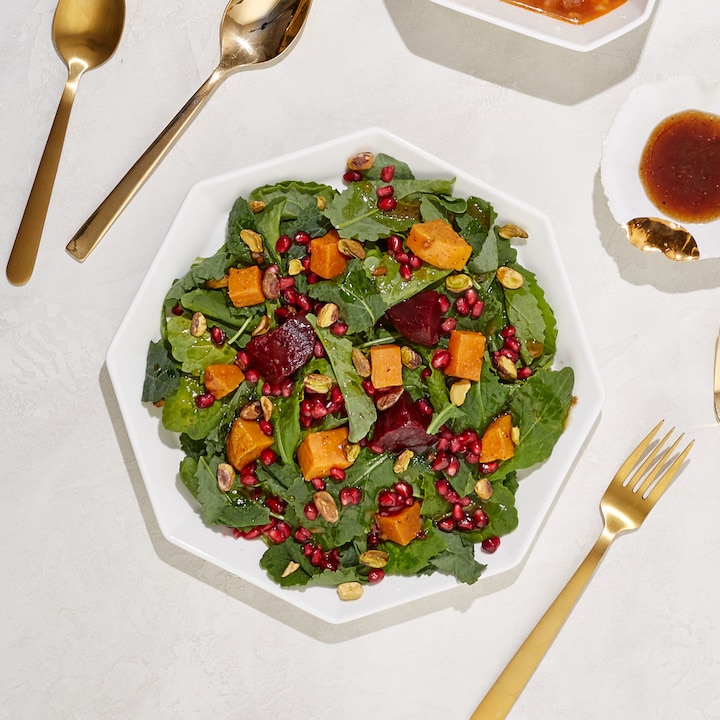
Kale grows well into the cooler months of fall and early end of winter, and comes back again in the spring. There are also environmentally-minded indoor farms like AeroFarms that produce delicious greens year-round. Some kale varieties are hearty while others can be delicately tender, meaning there’s no end to the ways that you can enjoy this versatile veggie.
So if you’re thinking about how to tackle your January reset or want a lighter, brighter dish to counter all of the excess of the holidays, kale is one of your most reliable options. And what better way to enjoy that deliciousness than in a salad, where its texture and taste can really shine?
Kale Varieties
First, let’s get into the different types of kale and the best ways to use them.
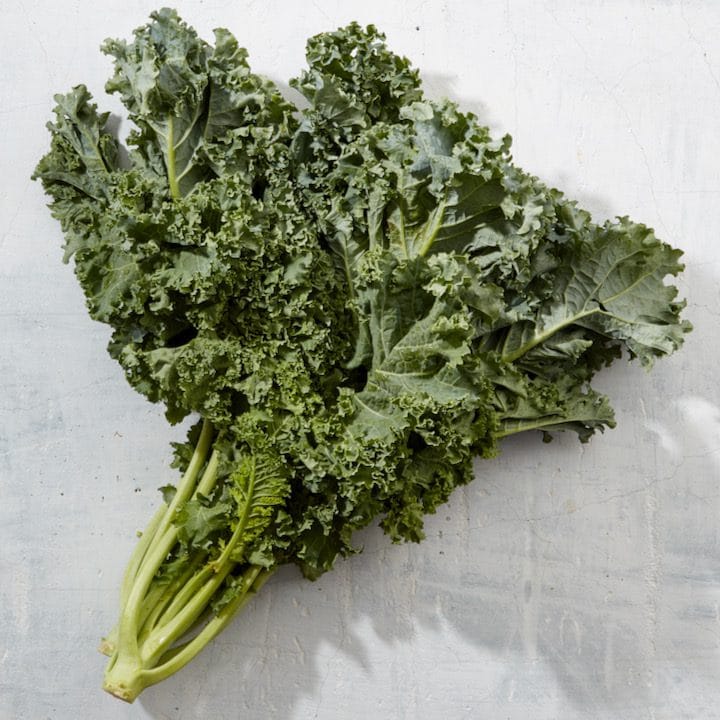 Curly Kale
Curly KaleAvailable in green and red varieties, curly kale has robust, crinkled leaves and a lightly bitter taste. It’s quite hearty and thick, making it better suited for sautés and braises. But that doesn’t stop it from adding some serious power to salads and other raw applications. We recommend massaging it first with a few dashes of lemon, salt, and olive oil to help break down some of its fiber and give it a more tender texture.
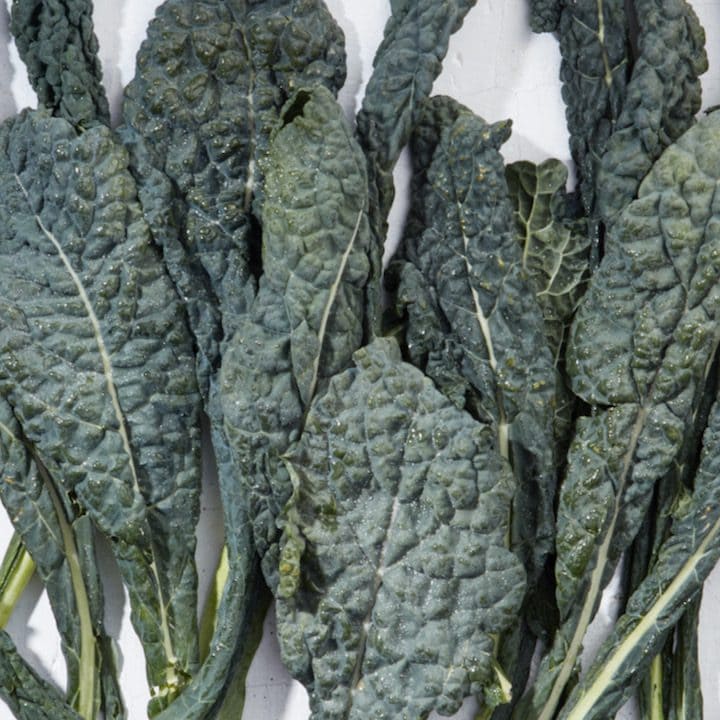 Lacinato Kale
Lacinato KaleAlso known as dinosaur kale or cavolo nero, lacinato kale tastes garden-fresh, tangy, and a mild bitterness. It is particularly loved in Tuscan cuisine, where it is used in stews like ribollita. Although lacinato kale is not quite as hardy as curly variety, it still benefits from some light massaging to make it just right for salads.
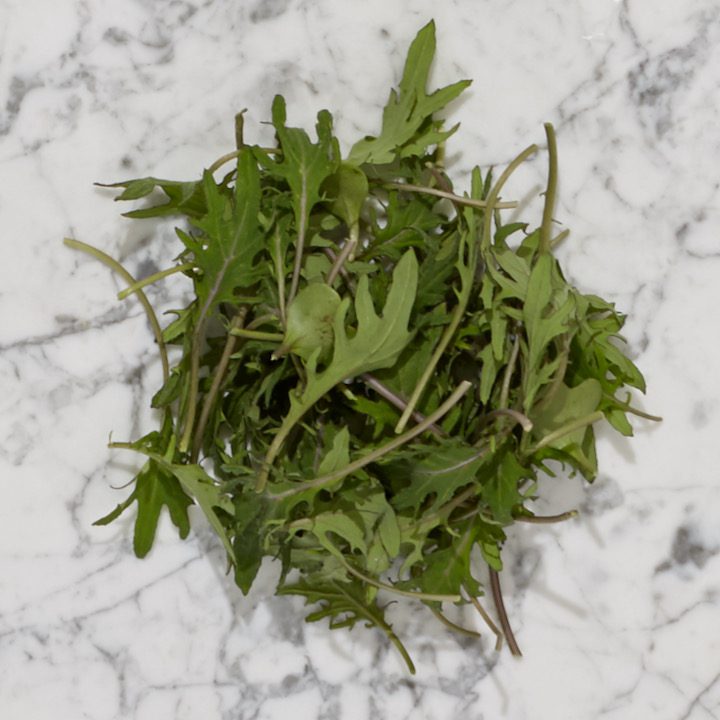 Baby Kale
Baby KaleBaby kale can come from either of the above varieties, but is picked while young and soft. It needs no massaging and can be tossed straight into a bit of dressing. If there ever was a green that was made for eating raw, this is definitely it.
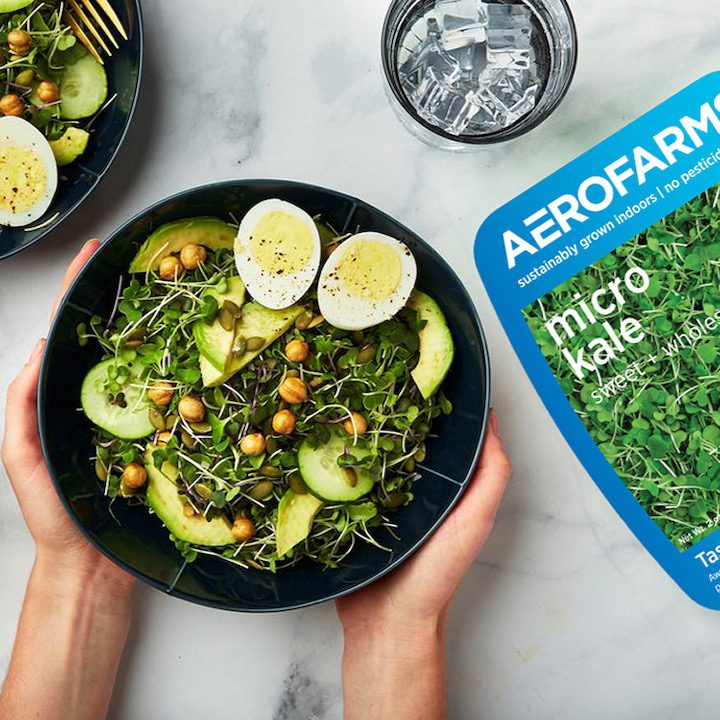 Micro Kale
Micro KaleMicro kale is picked even eariler than baby kale while its just sprouting. This gives it a frizzy, crisp texture and a mild taste. Evidence suggests that micro greens can pack as much as 5 times the amount of nutrients per serving than fully-mature varieties, making it a true powerhouse for health. In addition to using it as a base for salads, you can make it a garnish for eggs, pizza, or meats.
Tips For Making a Winter Kale Salad

Once you’ve got your greens, you’ll need to prep them as necessary. While baby and micro kale don’t need much attention, curly and lacinato kale will need to be broken down a bit. To remove the tougher stalks, pinch at the bottom of the leaf where it meets the center rib. Then, zip your fingers up to separate off the leafy part. Chop the leaves up into smaller pieces, then place them in a large bowl with just enough olive oil and lemon juice to lightly coat, plus a dash or two of salt. Massage the greens with your hands until they begin to wilt and lose their shape.
Next, get your dressing ready. In a pinch, we like a simple mixture of two parts olive oil to one part lemon juice with a touch of Dijon mustard and maple syrup. Any vinaigrette or acid-based dressings will work; with hardier varieties you can also use creamy dressings, such as caesar and ranch. Toss as much dressing as you like with your kale, then spread it out on your plate or serving dish.
The rest is up to you! On top, you’ll want a mix of textures: think a mix of tender produce or proteins, crunchy add-ons, and bits of creaminess. Here are some of our winter favorites:
Tender
-
- Roasted beets, winter squash, sweet potatoes, or carrots
-
- Grapefruit, orange, or tangerine pinwheels
-
- Apple or pear slices
-
- Caramelized onions or shallots
-
- Olives or capers
-
- Leftover sliced steak or chicken
-
- Tofu
-
- Cooked shrimp
-
- Tinned or smoked fish
Crunchy
-
- Nuts (pecans, almonds, pistachios, walnuts, etc.)
-
- Sunflower or pumpkin seeds
-
- Fried onions or shallots
-
- Croutons
-
- Pomegranate arils
-
- Raw, shredded carrots or beets
-
- Thinly-sliced raw onions
Creamy
-
- Goat, feta, or blue cheese crumbles
-
- Shaved Parmesan, Manchego, or Asiago cheese
-
- Hard-boiled eggs
-
- Cannellini, kidney, or garbanzo beans
-
- Burrata or fresh mozzarella
